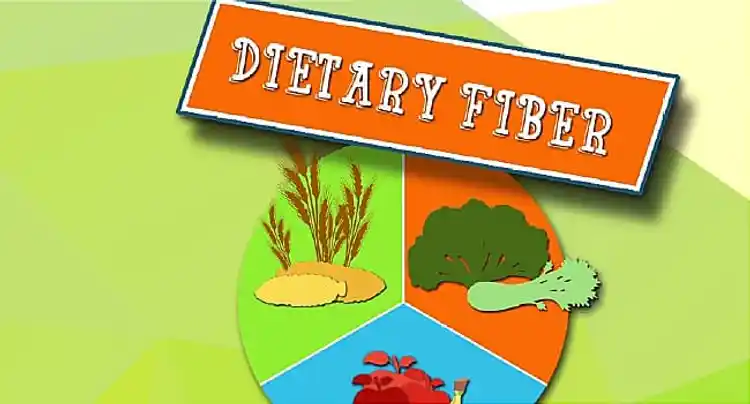What’s the Difference Between Soluble and Insoluble Fiber?

Hide Video Transcript
Video Transcript
Dietary fiber, also known bulk or roughage, is a type of carbohydrate that your body can't digest. It's found naturally in lots of different foods, like whole grains, fruits, and vegetables. It's also added to some processed foods like cereal and bread.
There are two types of fiber -- "soluble," if it dissolves in water, and "insoluble," if it doesn't. Soluble fiber absorbs water and turns into gel, which slows down digestion, helps you feel full, and lowers your blood sugar level.
All of this reduces your risk for obesity and diabetes. Soluble fiber also lowers blood cholesterol. Foods with soluble fiber include oatmeal, beans, oranges, and avocados.
Insoluble fiber does not absorb water. Instead, it adds bulk to your stool and moves your food through your intestines more quickly, which helps keep you regular. Insoluble fiber also lowers your odds of having heart disease and certain cancers, so load up on things like whole grains, lentils, flaxseed, and crunchy vegetables.
Fiber is essential for your health. Make sure you're giving your body enough of both kids for the maximum effect.
There are two types of fiber -- "soluble," if it dissolves in water, and "insoluble," if it doesn't. Soluble fiber absorbs water and turns into gel, which slows down digestion, helps you feel full, and lowers your blood sugar level.
All of this reduces your risk for obesity and diabetes. Soluble fiber also lowers blood cholesterol. Foods with soluble fiber include oatmeal, beans, oranges, and avocados.
Insoluble fiber does not absorb water. Instead, it adds bulk to your stool and moves your food through your intestines more quickly, which helps keep you regular. Insoluble fiber also lowers your odds of having heart disease and certain cancers, so load up on things like whole grains, lentils, flaxseed, and crunchy vegetables.
Fiber is essential for your health. Make sure you're giving your body enough of both kids for the maximum effect.

